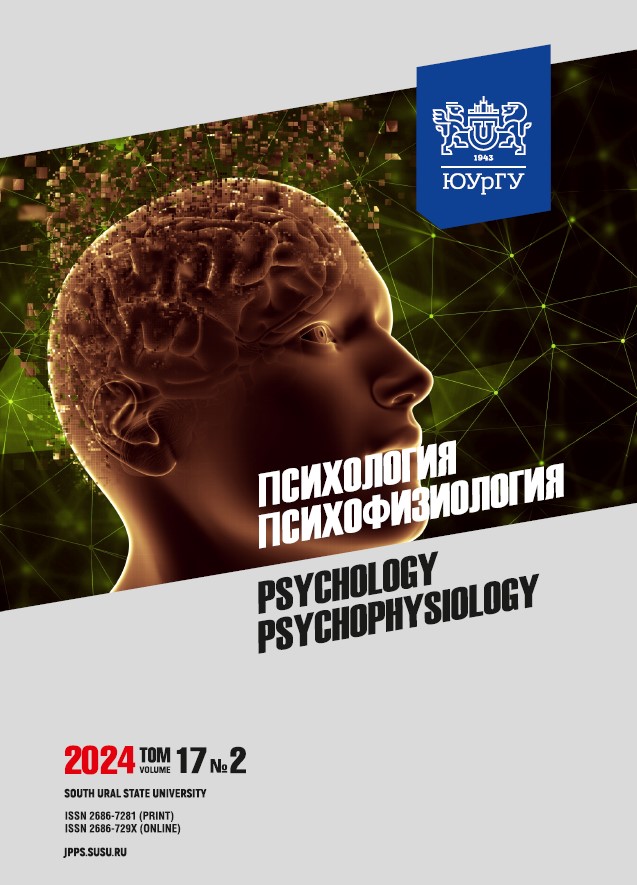The synaptic processes in the periaqueductal gray matter on the model of Parkinson’s disease with hydrocortisone protection
Abstract
Background. Neurodegenerative diseases, notably Parkinson's disease (PD), often result in the impairment of antinociception, leading to chronic pain. Therefore, identifying pharmacological agents capable of protecting against PD development and alleviating associated pain becomes crucial. Aims: to explore the potential protective function of hydrocortisone in PD progression, utilizing the Periaqueductal Gray Matter (PAG) and the Raphe Magnus Nucleus (RMG) as pain models. To this end, the impulse activity of 241 single PAG neurons was examined under three scenarios: normal conditions, a rotenone model of PD, and a rotenone model of PD + hydrocortisone, with RMG subjected to high-frequency stimulation (100 Hz for 1 second). Results. Under normal conditions, RMG neuron activity demonstrated a frequency range of 3 to 17 Hz, indicative of a balanced interplay between inhibitory and excitatory post-stimulus activities. Conversely, in the rotenone model of PD, neuron activity escalated to 124 to 150 Hz, signifying a significant imbalance, with an absence of a predominance of either inhibitory or excitatory post-stimulus activities. Notably, when hydrocortisone was applied in conjunction with the rotenone model, neuron activity normalized to a frequency range of 3 to 5 Hz, restoring the initial balance. Statistical analysis employing the χ² criterion revealed that the frequency distributions in the control group and the hydrocortisone-protected PD model were statistically indistinguishable at a significance level of p < 0.05. Conclusion. The findings underscore the efficacy of Hydrocortisone in safeguarding against PD development. This suggests a promising avenue for incorporating Hydrocortisone as an initial pharmacological strategy in the management of pain associated with PD.
Downloads
References
2. Broom D.M. Evolution of pain. In Pain: its nature and management in man and animals. Ed. Soulsby, Lord and Morton, D. Royal Society of Medicine International Congress Symposium Series. 2001;246:17–25.
3. Walters E.T., de C Williams A.C. Evolution of mechanisms and behaviour important for pain. Philosophical Transactions of the Royal Society B. 2019;374(1785):20190275. DOI: 10.1098/rstb.2019.0275
4. Nesse R.M., Schulkin J. An evolutionary medicine perspective on pain and its disorders. Philosophical Transactions of the Royal Society B. 2019;374(1785):20190288. DOI: 10.1098/rstb.2019.0288
5. Strausfeld N.J., Hirth F. Introduction to Origin and evolution of the nervous system. Philosophical Transactions of the Royal Society B. 2015;370(1684):20150033. DOI: 10.1098/rstb.2015.0033
6. Wenzel J.M., Oleson E.B., Gove W.N. et al. Phasic Dopamine Signals in the Nucleus Accumbens that Cause Active Avoidance Require Endocannabinoid Mobilization in the Midbrain. Current Biology. 2018;28(9):1392–1404.e5. DOI: 10.1016/j.cub.2018.03.037.
7. Langston J.W. The Parkinsons complex: Parkinsonism is just the tip of the iceberg. Annals of Neurology. 2006;59:591–596. DOI: 10.1002/ana.20834
8. Blanchet P.J., Brefel-Courbon C. Chronic pain and pain processing in Parkinsons disease. Progress in Neuro-Psychopharmacology and Biological Psychiatry. 2018;87(Pt.B):200–206. DOI: 10.1016/j.pnpbp.2017.10.010
9. Antonini A., Tinazzi M., Abbruzzese G. et al. Pain in Parkinsons disease: facts and uncertainties. European Journal of Neurology. 2018;25(7):917–e969. DOI: 10.1111/ene.13624
10. Nguy V., Barry B.K., Moloney N. et al. The associations between physical activity, sleep, and mood with pain in people with Parkinsons disease: an observational cross-sectional study. Journal of Parkinsons Disease. 2020;10:1161–1170. DOI: 10.3233/JPD-201938
11. Brunner R., Gerberich A. Managing Pain in Parkinsons Disease. Practical Pain Manage-ment. 2021;21(1). URL: https://www.medcentral.com/neurology/parkinsons/managing-pain-parkinson-disease (accessed 24.11.2023)
12. Gandolfi M., Geroin C., Antonini A. et al. Understanding and treating pain syndromes in Parkinsons disease. International Review of Neurobiology. 2017;134:827–858. DOI: 10.1016/bs.irn.2017.05.013
13. Rukavina K., Leta V., Sportelli C. et al. Pain in Parkinsons disease: new concepts in path-ogenesis and treatment. Current Opinion in Neurology. 2019;32:579–588. DOI: 10.1097/WCO.0000000000000711
14. Suppa A., Leone C., Di Stasio F. et al. Pain-motor integration in the primary motor cortex in Parkinsons disease. Brain Stimulation. 2017;10(4):806–816. DOI: 10.1016/j.brs.2017.04.130
15. Sung S., Vijiaratnam N., Chan D.W.C. et al. Parkinson disease: A systemic review of pain sensitivities and its association with clinical pain and response to dopaminergic stimulation. Journal of the Neurological Sciences. 2018;395:172–206. DOI: 10.1016/j.jns.2018.10.013
16. Joseph C., Jonsson-Lecapre J., Wicksell R. et al. Pain in persons with mild-moderate Parkinsons disease: a cross-sectional study of pain severity and associated factors. International Journal of Rehabilitation Research. 2019;42(4):371–376. DOI: 10.1097/MRR.0000000000000373
17. Back F.P., Carobrez A.P. Periaqueductal gray glutamatergic, cannabinoid and vanilloid receptor interplay in defensive behavior and aversive memory formation. Neuropharmacology. 2018;135:399–411. DOI: 10.1016/j.neuropharm.2018.03.032
18. Bourbia N., Pertovaara A. Involvement of the periaqueductal gray in the descending antinociceptive effect induced by the central nucleus of amygdala. Physiological Research. 2018;67(4):647–655. DOI: 10.33549/physiolres.933699
19. Wang Q.P., Nakai Y. The dorsal raphe: an important nucleus in pain modulation. Brain Research Bulletin. 1994;34(6):575–585. DOI: 10.1016/0361-9230(94)90143-0
20. Ham S., Lee Y.I., Jo M. et al. Hydrocortisone-induced parkin prevents dopaminergic cell death via CREB pathway in Parkinsons disease model. Scientific Reports. 2017;7(1):525. DOI: 10.1038/s41598-017-00614-w
21. Paxinos G., Watson C. The rat brain in stereotaxic coordinates. Elsevier. Academic Press. 2005:367.
22. Kilkenny C., Browne W., Cuthill I.C. et al. Animal research: Reporting in vivo experiments: The ARRIVE guidelines. British Journal of Pharmacology. 2010;160(7):1577–1579. DOI: 10.1111/j.1476-5381.2010.00872.x
23. Orlov A.I. Prikladnaya statistika [Applied statistics]. Moscow. Ekzamen Publ. 2004:656. (in Russ).
24. Hynd M.R., Scott H.L., Dodd P.R. Glutamate-mediated excitotoxicity and neurodegeneration in Alzheimers disease. Neurochemistry International. 2004;45(5):583–595. DOI: 10.1016/j.neuint.2004.03.007.
25. Lucas D.R., Newhouse J.P. The toxic effect of sodium L-glutamate on the inner layers of the retina. AMA Archives of ophthalmology. 1957;58(2):193–201. DOI: 10.1001/archopht.1957.00940010205006.
26. Olney J.W. Brain lesions, obesity, and other disturbances in mice treated with monosodium glutamate. Science. 1969;164(3880):719–721. DOI: 10.1126/science.164.3880.719.
References on translit
-Copyright (c) 2024 Psychology. Psychophysiology

This work is licensed under a Creative Commons Attribution-NonCommercial-NoDerivatives 4.0 International License.



